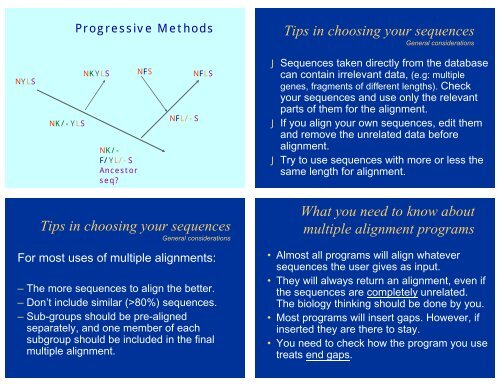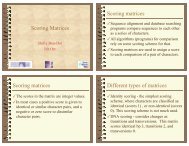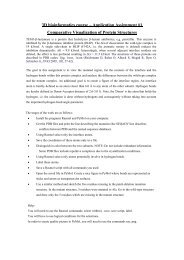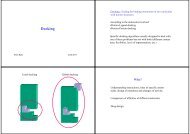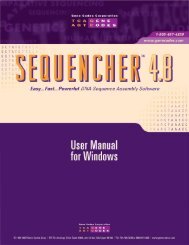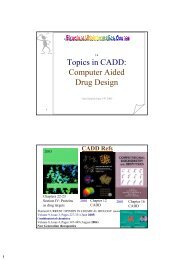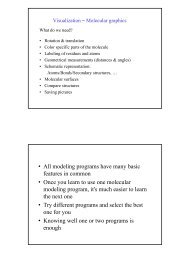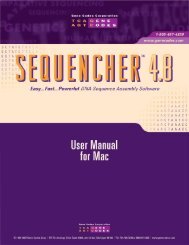Multiple Alignment - Bioinformatics and Biological Computing
Multiple Alignment - Bioinformatics and Biological Computing
Multiple Alignment - Bioinformatics and Biological Computing
Create successful ePaper yourself
Turn your PDF publications into a flip-book with our unique Google optimized e-Paper software.
NYLS<br />
NK/-YLS<br />
Progressive Methods<br />
NKYLS NFS NFLS<br />
NK/-<br />
F/YL/-S<br />
Ancestor<br />
seq<br />
NFL/-S<br />
Tips in choosing your sequences<br />
General considerations<br />
J Sequences taken directly from the database<br />
can contain irrelevant data, (e.g: multiple<br />
genes, fragments of different lengths). Check<br />
your sequences <strong>and</strong> use only the relevant<br />
parts of them for the alignment.<br />
J If you align your own sequences, edit them<br />
<strong>and</strong> remove the unrelated data before<br />
alignment.<br />
J Try to use sequences with more or less the<br />
same length for alignment.<br />
Tips in choosing your sequences<br />
General considerations<br />
For most uses of multiple alignments:<br />
– The more sequences to align the better.<br />
– Don’t include similar (>80%) sequences.<br />
– Sub-groups should be pre-aligned<br />
separately, <strong>and</strong> one member of each<br />
subgroup should be included in the final<br />
multiple alignment.<br />
What you need to know about<br />
multiple alignment programs<br />
• Almost all programs will align whatever<br />
sequences the user gives as input.<br />
• They will always return an alignment, even if<br />
the sequences are completely unrelated.<br />
The biology thinking should be done by you.<br />
• Most programs will insert gaps. However, if<br />
inserted they are there to stay.<br />
• You need to check how the program you use<br />
treats end gaps.


